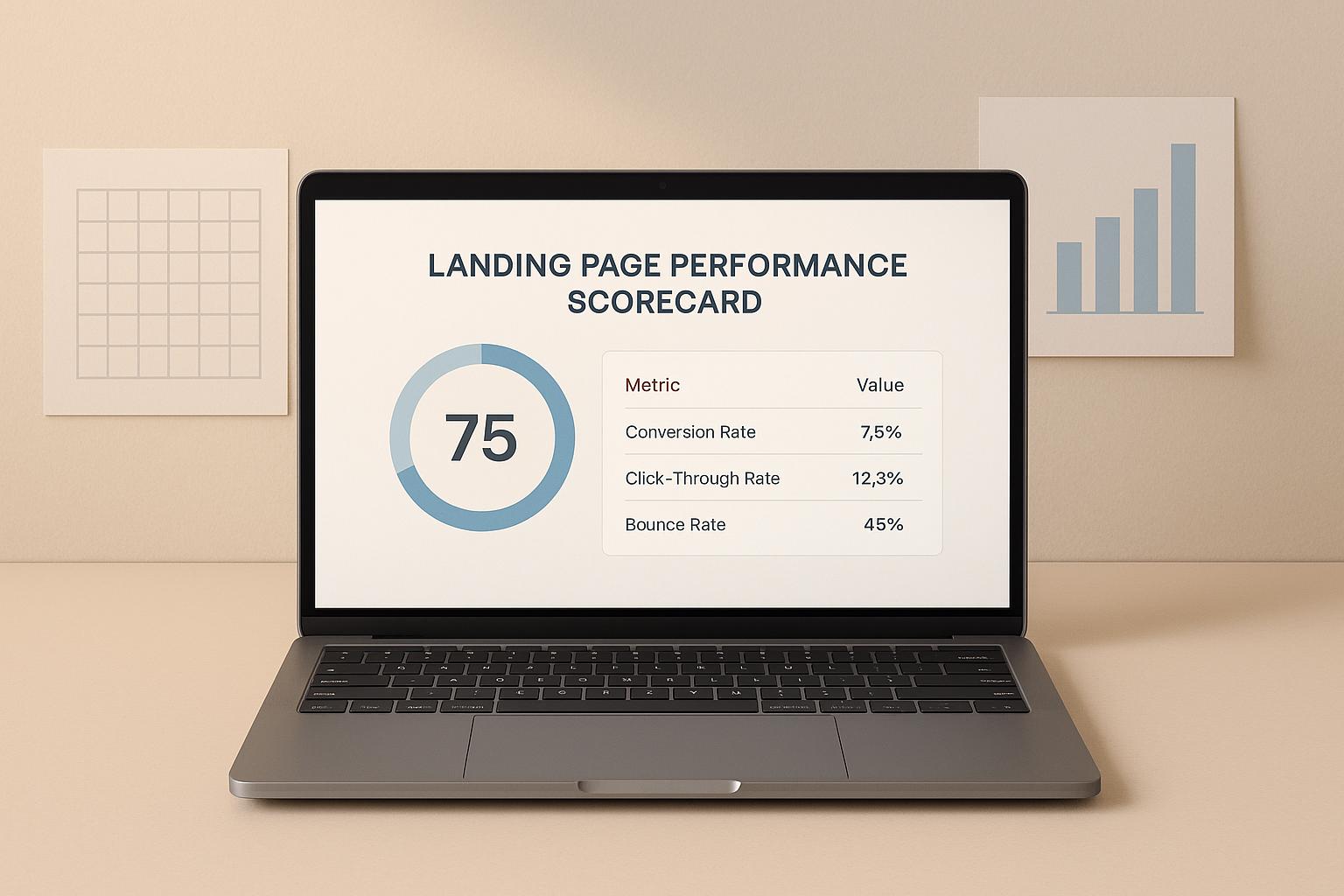

Multivariate AB Testing for Smarter Conversions

Multivariate AB Testing for Smarter Conversions
 10-02-2025 (Last modified: 21-05-2025)
10-02-2025 (Last modified: 21-05-2025)
Introduction
If you’re already familiar with A/B testing but want to take your optimization efforts to the next level, multivariate AB testing is the answer. This advanced testing method allows you to analyze multiple changes at once, helping you uncover the best-performing combination of elements for your website or digital campaigns.
In this guide, we’ll explore multivariate AB testing, how it works, how it differs from traditional A/B testing, and how you can use it to maximize conversion rates. Whether you’re a marketer, UX designer, or business owner, understanding this method will give you a competitive edge in optimization.
What Is Multivariate AB Testing?
Multivariate AB testing is an advanced form of A/B testing that examines multiple changes to a webpage or campaign simultaneously. Instead of comparing just two versions (as in standard A/B testing), multivariate AB testing evaluates various combinations of changes to determine which configuration works best.

For example, if you’re optimizing a landing page, you might want to test:
- Headlines: “Boost Your Savings” vs. “Save More Today”
- CTA Button Colors: Green vs. Blue
- Hero Images: Product image vs. Lifestyle image
Rather than testing each element separately (as in standard A/B testing), multivariate A/B testing generates all possible combinations and measures which one yields the best performance.
Example Test Setup:
| Headline | CTA Color | Image | Combination ID |
|---|---|---|---|
| Option A | Green | Product Image | #1 |
| Option A | Blue | Product Image | #2 |
| Option B | Green | Product Image | #3 |
| Option B | Blue | Product Image | #4 |
| Option A | Green | Lifestyle Image | #5 |
| Option A | Blue | Lifestyle Image | #6 |
| Option B | Green | Lifestyle Image | #7 |
| Option B | Blue | Lifestyle Image | #8 |
Each visitor is shown one variation, and over time, data is collected to determine which combination achieves the best results.
Multivariate A/B Testing vs. Traditional A/B Testing
While both methods are used to improve website performance, they have key differences:
| Feature | Multivariate A/B Testing | Traditional A/B Testing |
| Purpose | Tests multiple variables at once | Tests a single element at a time |
| Complexity | Higher due to multiple combinations | Simpler, only two versions tested |
| Traffic Requirement | High, as traffic is split across multiple variations | Lower, since only two variations are tested |
| Best Use Case | Optimizing multiple page elements together | Isolating the impact of a single change |
If you’re unsure which method to use, consider your traffic levels. Multivariate A/B testing requires significantly more traffic to reach statistical significance since visitors are divided among multiple variations.
For a deeper understanding of standard A/B testing, check out our A/B Testing Guide.
Benefits of Multivariate A/B Testing
1. Identifies the Best-Performing Combination
Unlike A/B testing, which isolates a single variable, multivariate A/B testing shows how different elements interact. This allows you to determine which combination of elements delivers the highest conversion rates.
2. Saves Time and Effort
Instead of running multiple sequential A/B tests (which can take months), multivariate testing lets you test everything in one go. This speeds up the optimization process and helps implement improvements faster.
3. Optimizes Multiple Elements Simultaneously
By testing multiple variables at once, businesses can gain deeper insights into user behavior and create a highly optimized user experience.
4. Provides Data-Driven Decision Making
Instead of guessing which changes will work, multivariate A/B testing provides concrete data, reducing reliance on intuition or subjective opinions.
5. Enhances UX and Customer Engagement
By optimizing design elements such as layout, images, and CTAs, businesses can create an improved user experience, leading to longer session durations and lower bounce rates.
When Should You Use Multivariate A/B Testing?
While multivariate A/B testing is highly effective, it’s not always the best choice for every scenario. Here’s when it works best:
- When you have high website traffic to accommodate multiple variations.
- When you want to test multiple page elements at the same time.
- When you need deeper insights into how different design elements interact.
- When you’re making small, iterative changes rather than testing a completely new layout.

Best Practices for Running a Multivariate A/B Test
To get the most out of your multivariate AB testing, follow these best practices:
1. Choose High-Impact Elements
Prioritize testing elements that directly influence user behavior, such as:
- Headlines
- CTA buttons
- Images
- Layouts
- Form fields
2. Ensure Sufficient Traffic
Since traffic is split across multiple variations, your site must have enough visitors to collect meaningful data. If your traffic is low, consider starting with A/B testing instead.
3. Use the Right Testing Tools
There are several platforms that support multivariate A/B testing:
- PageTest.ai – AI-powered optimization for websites
- Google Optimize (discontinued, alternatives available)
- Optimizely – Enterprise-level A/B and multivariate testing
- VWO – Visual testing with behavioral insights
4. Let the Test Run Until Statistical Significance is Achieved
Stopping a test too early can lead to misleading results. Use a 95% confidence level to ensure your findings are statistically valid.
5. Analyze Interactions Between Variables
Multivariate testing reveals how different elements work together. Be sure to analyze the data holistically rather than focusing on just one change.
6. Apply Findings to Future Tests
Once you’ve identified the best-performing combination, apply those insights to future optimizations and iterative improvements.
For more insights into testing methodologies, check out our Multivariate Testing Guide.
Common Pitfalls to Avoid
Even with a well-planned test, mistakes can happen. Here are a few common pitfalls to avoid:
- Not Having Enough Traffic – Without sufficient visitors, results won’t be reliable.
- Testing Too Many Variations – Too many combinations dilute traffic, making it harder to reach statistical significance.
- Ignoring Mobile vs. Desktop Data – Ensure that test results are analyzed separately for different devices.
- Stopping the Test Too Early – Let the test run long enough to achieve confidence in the results.
Final Thoughts: Is Multivariate A/B Testing Right for You?
If you have a high-traffic website and want to optimize multiple elements at once, multivariate AB testing is a valuable strategy. It provides deeper insights, speeds up testing, and helps refine your digital experience efficiently.
By implementing best practices, avoiding common pitfalls, and using the right tools, you can maximize your conversion rates and improve user engagement effectively.
Ready to take your testing to the next level? Start experimenting with multivariate A/B testing today and unlock new optimization opportunities!
Multivariate AB Testing FAQs
What is multivariate AB testing and how does it work?
It’s like A/B testing with a turbo boost. Instead of testing one change at a time, multivariate AB testing tries out all combinations of multiple changes (like headlines, images, and buttons) to see which combo gets the best results.
When should you use multivariate AB testing over A/B testing?
Go multivariate when you’ve got plenty of traffic and want to test multiple elements at once. If you’re just tweaking one thing or traffic’s a bit low, stick with classic A/B testing.
What are the benefits of multivariate AB testing for conversion optimization?
It saves time, reveals which elements work well together, and helps you make smarter, data-backed decisions that boost conversions and improve the user experience.
How much traffic do you need for multivariate AB testing?
Quite a bit. The more combinations you test, the more visitors you’ll need to get reliable results. No crowd? No multivariate.
What elements should you test in a multivariate AB test?
Stick to the heavy hitters—headlines, CTAs, images, forms, and layouts. Basically, anything that could influence a visitor’s decision to click, sign up, or buy.
What are the most common mistakes in multivariate AB testing?
Not enough traffic, testing too many combos, ignoring mobile users, and pulling the plug too early. Patience (and segmentation) pays off.
say hello to easy Content Testing
try PageTest.AI tool for free
Start making the most of your websites traffic and optimize your content and CTAs.
Related Posts

 15-12-2025
15-12-2025
 Ian Naylor
Ian Naylor
Landing Page Performance Scorecard
Evaluate your landing page with our free scorecard tool! Input metrics like visitors and bounce rate to get a detailed performance score.

 13-12-2025
13-12-2025
 Becky Halls
Becky Halls
The Biggest Marketing Shifts Coming in 2026: What Actually Matters Now
2026 isn’t bringing “the future of marketing.” It’s bringing the correction. The dust is finally settling after years of AI noise, platform changes, and search unpredictability. And we’re now seeing what actually sticks, and the shifts that will shape how marketing teams operate for the next decade… These aren’t trends for trends’ sake. They’re structural […]

 13-12-2025
13-12-2025
 Ian Naylor
Ian Naylor
User Engagement Signals That Impact Rankings
How CTR, dwell time, bounce rate and pages-per-session influence SEO rankings — and practical steps (UX, titles, testing) to improve engagement.
